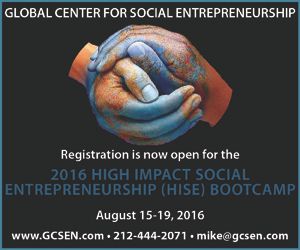Save Us. Be Creative!
Tales of a Hudson Valley Localist
by Scott Tillitt
 |
| Re>Think Local's REMIX in Newburgh, 11/19/12. |
Stop reading for a few seconds
(though you should finish the paragraph first) and think about how many of your
friends and acquaintances work for themselves—not just those with their own
business, but also those who freelance or consult (whether full or part time).
How many consider themselves “creative”? We’re talking the kinds of folks who
make art or sell crafts on Etsy, or provide creative or technical services,
maybe create artisanal food products, design apps, or run a healing practice.
Chances are, you know a lot. And
chances are, as the months get warmer and then colder and the cycle repeats
itself next year and the year after, you’ll know more and more.
Independent workers in all their
manifestations comprise nearly one-third of the US workforce—and that’s
according to pre-recession 2006 figures (when the government stopped counting),
so the count is probably higher. Such citizens are integral to the New Economy.
While the positive impact of
cultural institutions is pretty much conventional wisdom at this point, the
larger creative economy that includes DIY (do-it-yourself) makers and small,
creative businesses is less understood. For the most part, policies and budget
decisions and economic development initiatives aren’t considering them.
Consider this: Entrepreneurial
activity in 2009 was at its highest in 14 years. In 2008 there were 23 million
personal businesses in this country, with 1.7 million started that year alone.
Census data shows that about 40 percent of personal business owners work less
than 20 hours per week on their ventures, so many of these new operations are
part time. A 2008 Kauffman Foundation study found that 36 percent of small
businesses surveyed started as a part-time business.
“It is clear that the new DIY
movement is creating new small business opportunities and Makers are starting
full- and part-time businesses to pursue them,” concluded the authors of an
Intuit Future of Small Business report.
Berkshire Creative, a group
focused on (as you may intuit) stimulating the creative economy in the
Berkshires—a region not so different from our own Hudson Valley—has found that,
among other things, the creative sector:
• helps revitalize downtown
areas;
• helps attract other businesses
and residents; and
• increases the economic
competitiveness of other sectors and creates new jobs in them.
In Beacon, where I live, the
renowned contemporary art museum Dia:Beacon is largely credited with the town’s
renaissance, bringing international awareness, tourists (65,000-plus a year)
and money—but also artists and other creatively inclined residents who started
moving here soon after Dia’s move was announced and continue to more than 10
years later.
Those residents have brought new
energy and businesses, but they also bring new thinking that can impact larger
societal issues. They have the kind of broad perspective we need to address the
intertwined challenges we face, connecting the dots between seemingly disparate
ideas. “We cannot solve our problems with the same thinking we used when we
created them,” said Einstein, the literal poster boy of creative thinking.
So how can we nurture this
creative class and creative solopreneurs? Quite simply, we need to rethink
outdated approaches to economic development, which often focus on attracting
large out-of-region businesses and giving them tax breaks, hoping jobs and
subsequent tax revenues will follow. That model has been mostly proven bunk.
I agree in part with Freelancers
Union founder Sara Horowitz: “The solution will rest with our ability to form
networks for exchange and to create political power.”
We’re starting to do that in the
Hudson Valley. Re>Think Local and BEAHIVE, both of which I’m involved with,
give the creative class and entrepreneurs a voice and support not found in
typical government agencies and traditional business organizations.
Both are part of growing global
movements. Re>Think Local, a progressive business network, is affiliated
with the Business Alliance for Local Living Economies (BALLE), which includes
80 networks representing 30,000 values-aligned business innovators.
BEAHIVE is partly inspired by the
“coworking” movement, collaborative spaces that address the changing nature of
work, providing professional and social and emotional support to people. There
are now more than 1,300 dedicated coworking spaces worldwide, having doubled each year since 2006, when the movement
more or less started.
As Buckminster Fuller said, “To
change something, build a new model that makes the existing model obsolete.”
Let’s build it, together!
We’ll explore all this more in
future articles and through various initiatives, including TEDxLongDock, an
independently organized TED conference coming to Beacon this spring.
Scott Tillitt is a founding board member of Re>Think Local, as well
as founder of BEAHIVE and Antidote Collective, which does PR and communications
for social impact.




